Listening Guide
| time | lead drum |
|---|---|
| 0:00 | from Item 3b (Adavu, pt. 2) |
| 0:06 | transition – waiting (Afovu) |
| 0:13 | theme 1A |
| 0:20 | theme 1B |
| 0:27 | theme mix 1A 1B |
| 0:36 | transition – waiting |
| 0:45 | theme 2A |
| 0:58 | connecting phrase |
| 1:01 | theme 2B |
| 1:07 | theme 2A |
| 1:15 | connecting phrase |
| 1:17 | theme 2B |
| 1:23 | transition – waiting |
| 1:31 | theme 3A |
| 1:46 | theme 3B |
| 1:55 | theme 3A |
| 2:03 | theme 3B |
| 2:09 | transition – waiting |
| 2:18 | theme 4A |
| 2:42 | transition – waiting |
| 2:49 | theme 5A |
| 3:01 | theme 5B |
| 3:13 | theme 5C |
| 3:19 | theme 5D |
| 3:31 | transition – waiting |
| 3:38 | theme 6A |
| 3:56 | theme 6B |
| 4:08 | theme 6A |
| 4:17 | theme 6B |
| 4:29 | transition – waiting |
| 4:37 | theme 7A |
| 4:55 | theme 7B |
| 5:10 | theme 7A |
| 5:19 | theme 7B |
| 5:28 | ending signal |
Musical Notation Figures
Fully Mixed Item
Mixer
Use the mixer controls to change instrument levels and skip to particular timestamps.
NOTE: We recommend not using Safari as it sometimes exhibits track synchronization problems.

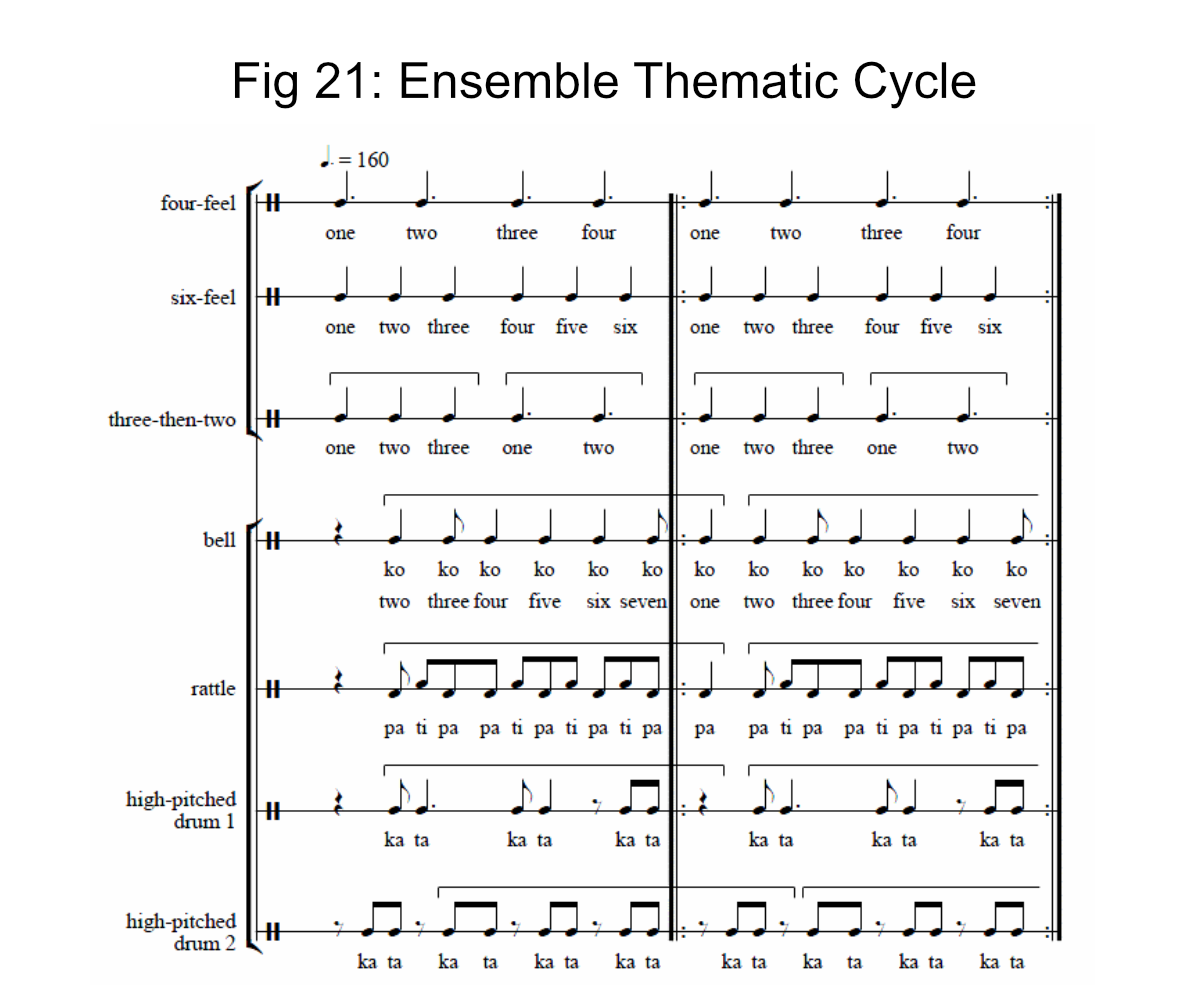


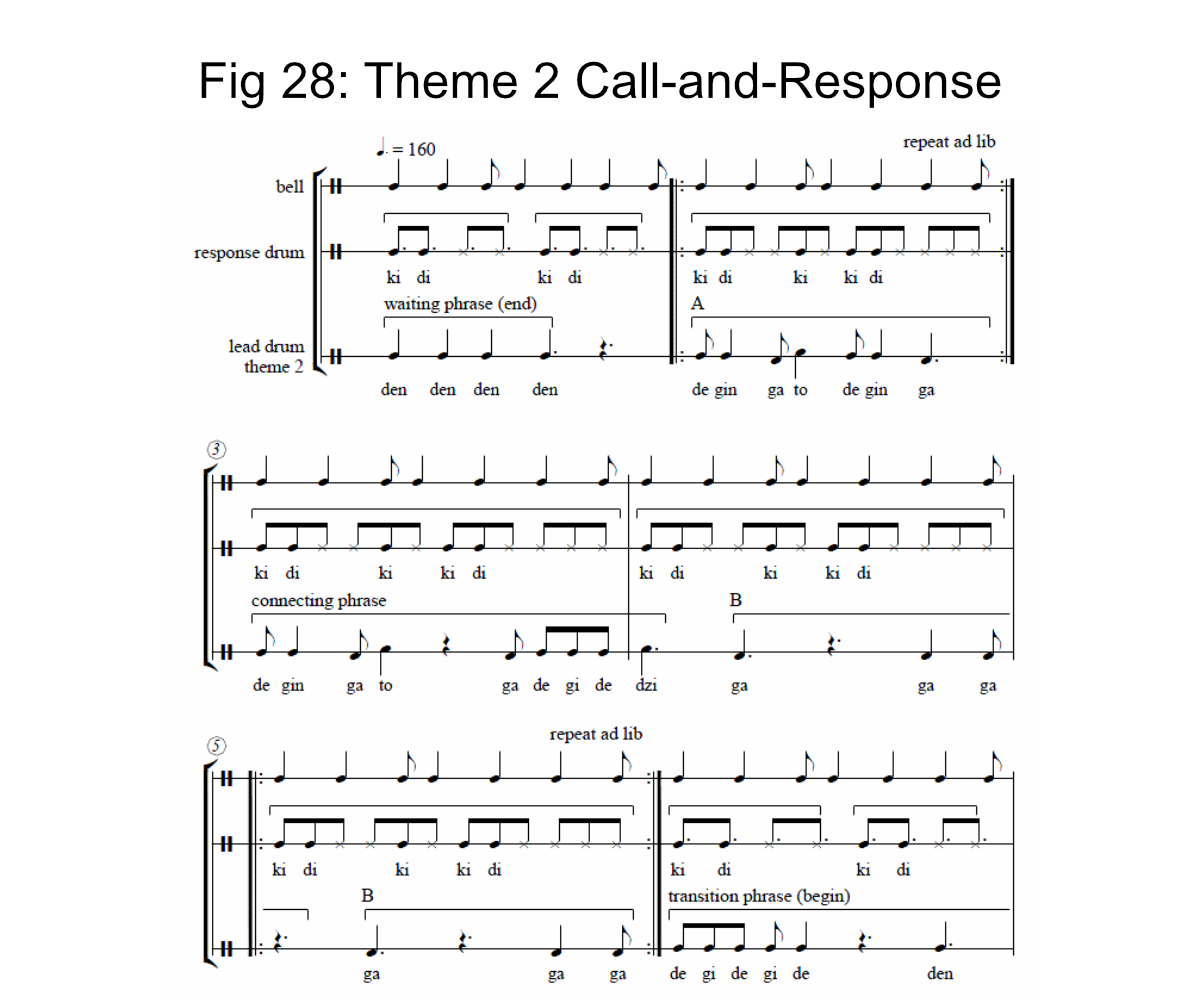
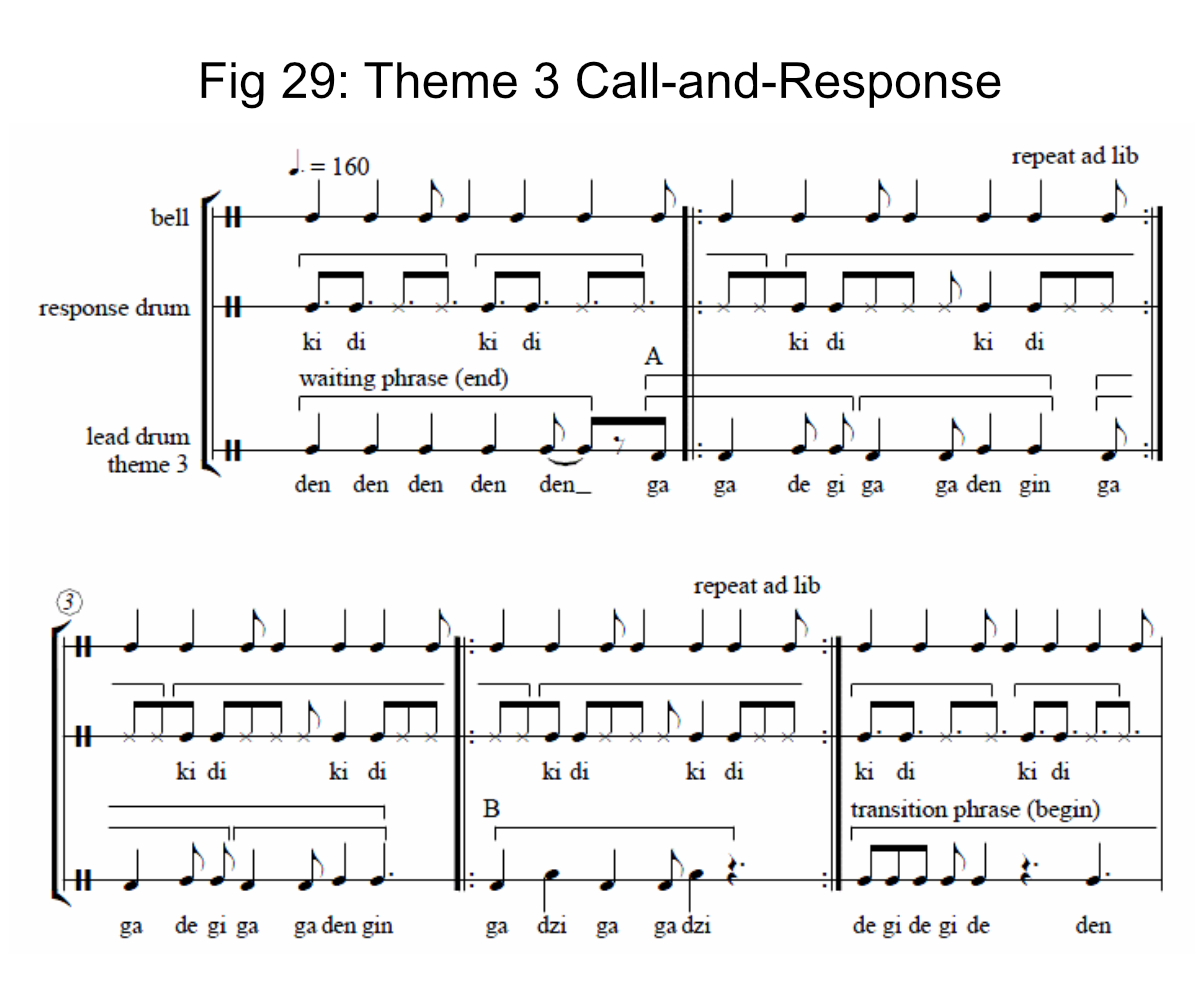
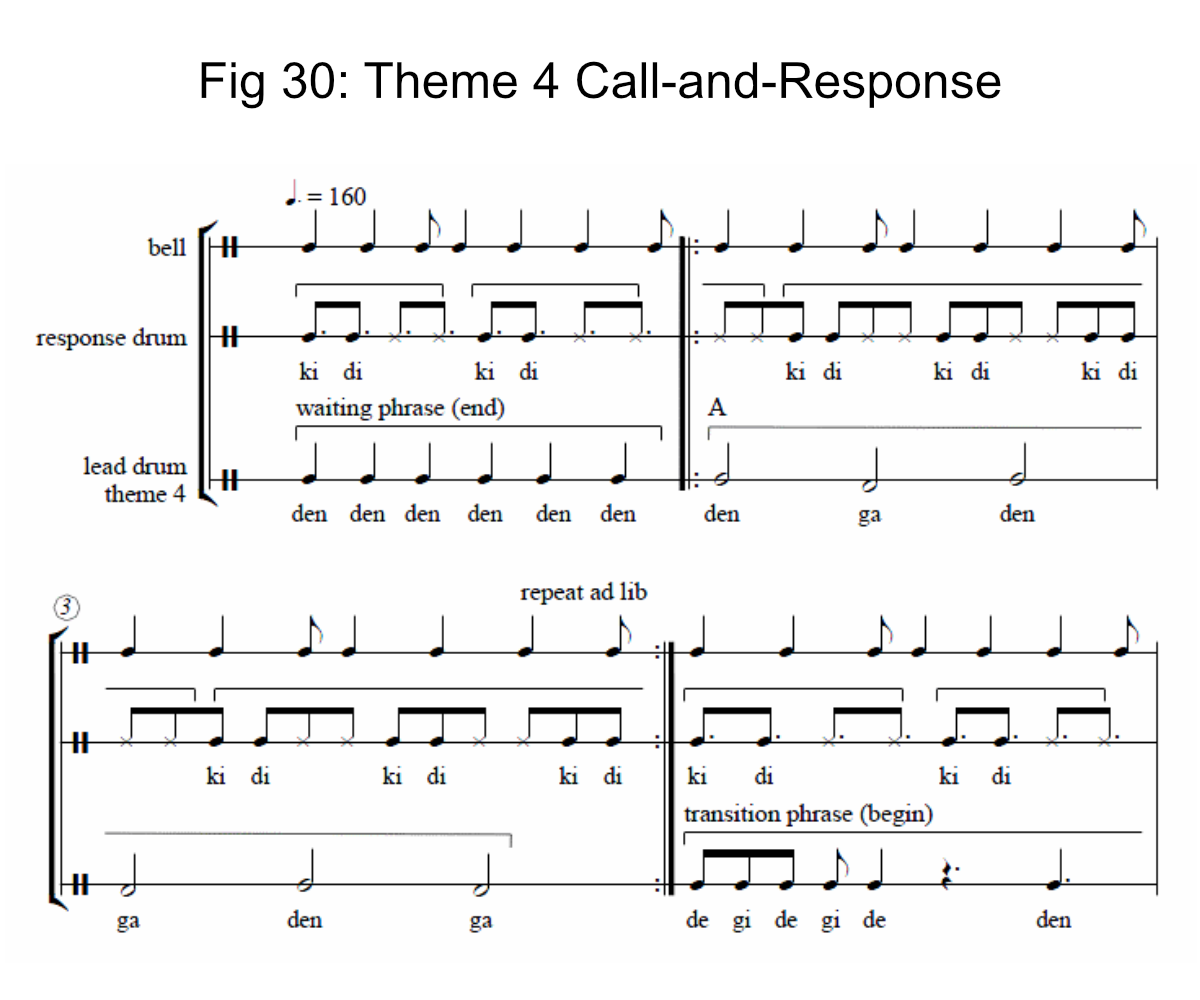
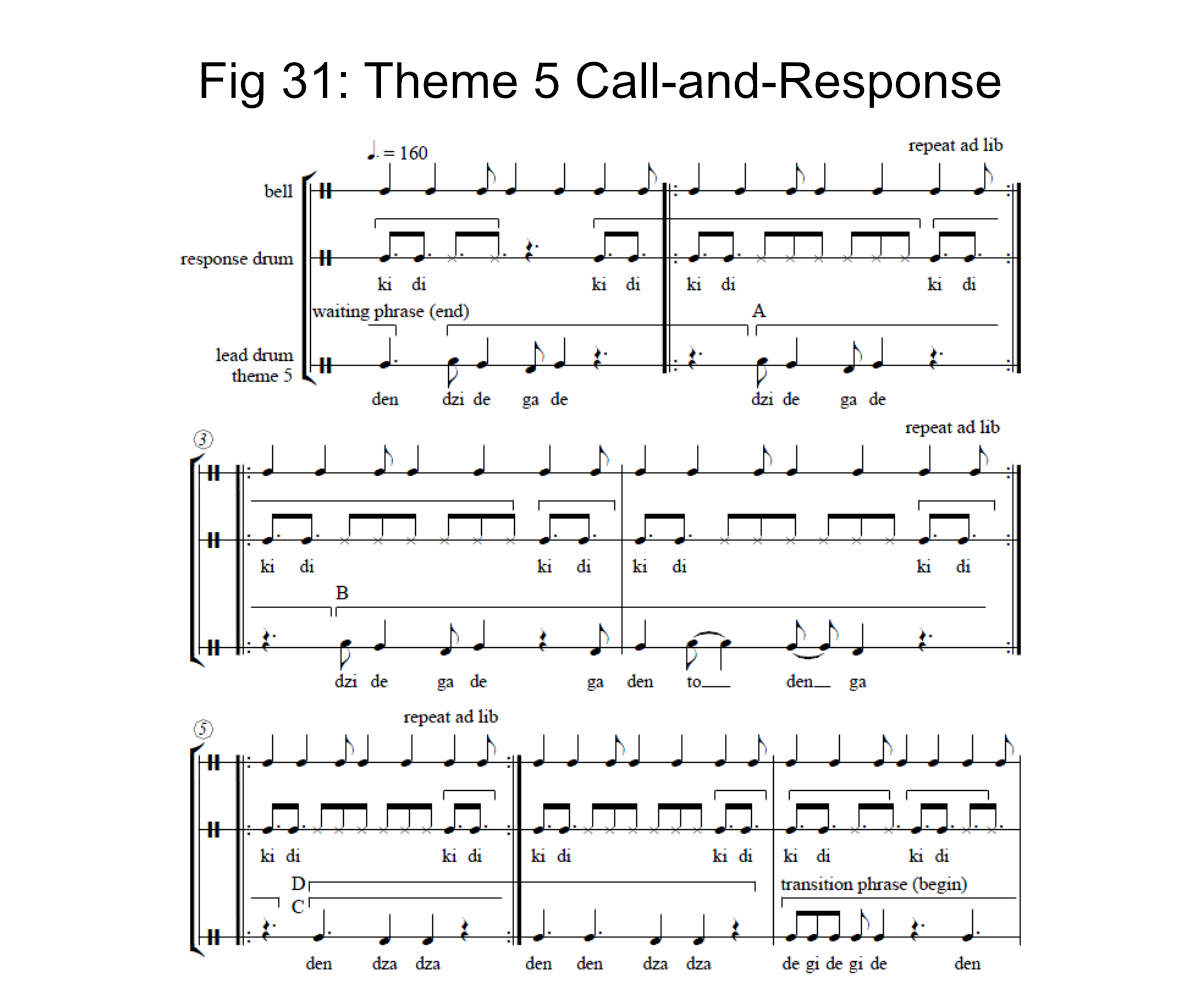
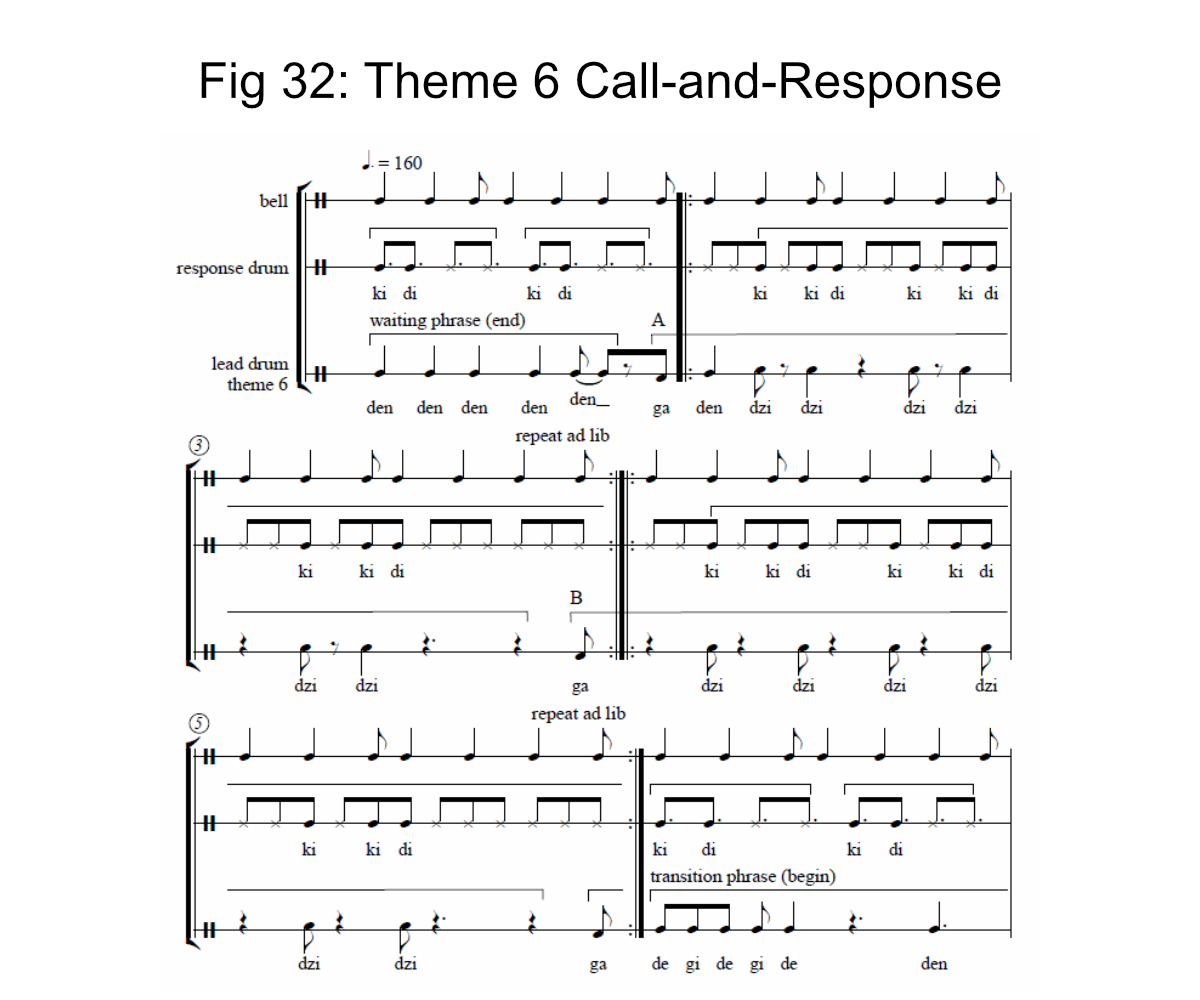

Performance Comment
Although this is the longest Drum in the Yewevu arrangement, the recording went rather easily. As a player, my challenge was to discipline myself to only play the variations presented in the MTO article and to play them in an orderly sequence that would enable readers to easily link the analytic discussion with the sound recording. Concerned that a mistake made deep into the piece would require a re-take, I was relieved to make it through the whole piece without mishap. I gave myself a new praise name, “Professor One Take”!
The piece is in seven passages, one for each theme, separated by the “transition – waiting” passage. For each lead drum theme, I played the variations twice. After recording the lead drum part, I did the response part, which went almost perfectly except for the very first entrance of theme 7. This response typically is hard to catch because the lead drum call (theme 7A) overlaps the response phrase in a tricky way. I repeated the lead drum theme more times that I would be typical in a live performance so that the recording would enable listeners to hear the relationship. In both themes 6 and 7 the recording allows study of the overlap between “dzi” strokes on lead drum with bounces on the response drum. Another tricky place for me was the timing of the second motive in theme 3A (motive 1: “gaga degi”; motive 2: “ga gaden gin”). The notation prescribes that the initial “ga” in motive 2 be a quarter note, that is, be temporally distanced from the second “ga” and timed to coincide with bell stroke 3. I was aware that I tend to play this “ga” stroke later than written, i.e., like an eighth note pickup as in the first motive. Keen listeners can judge for themselves how I did.
The ensemble parts for Afovu were fun to record, although playing six minutes of unaccompanied bell made “real world” time seem to move by very slowly. My arm got tired recording the fast rattle pattern, making me wish I had simply showed the part as marking the tactus beats. (This often is done in Africa.) It was particularly enjoyable to record the two high-pitched drum parts.